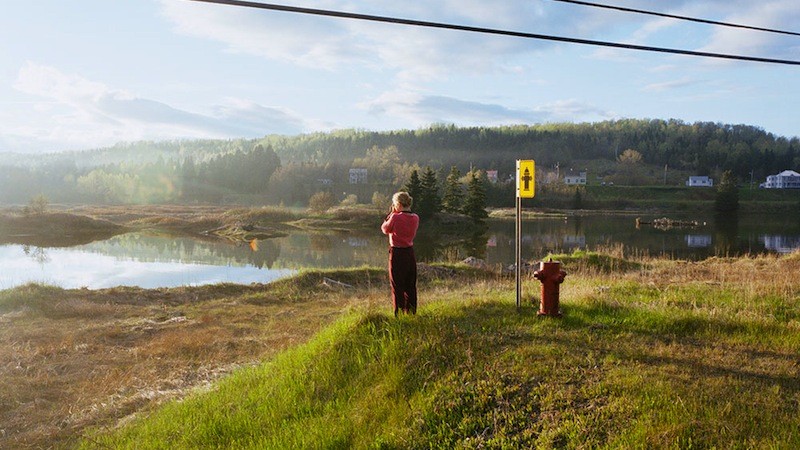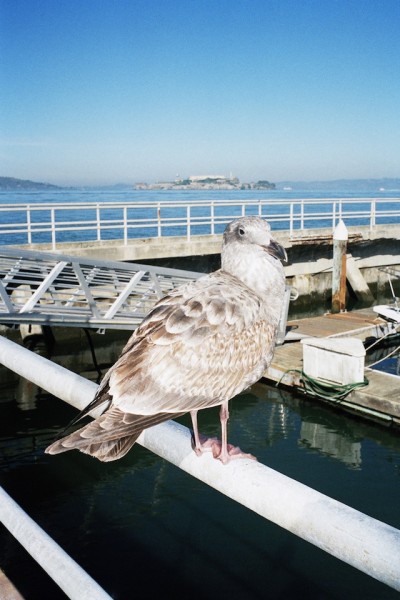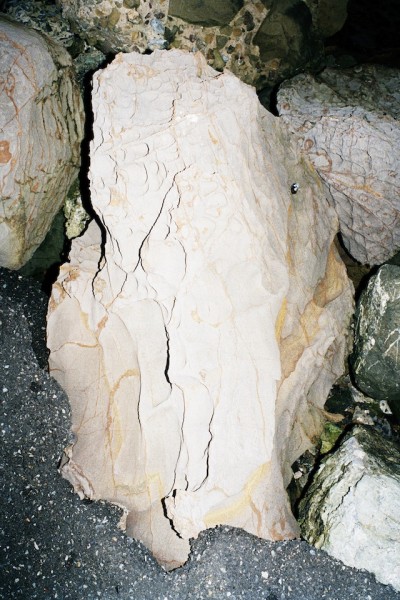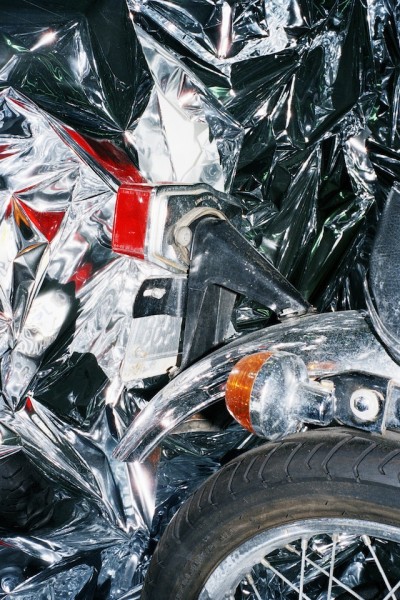The current show at CULT gallery, Village / High Hills, offers two photographic investigations of place, history, and language. Village, a series of documentary yet airy and ethereal photographs, was created by Stockholm-based photographers Klara Källström and Thobias Fäldt during a three-month residency in Quebec. High Hills is a new series of work shot in San Francisco for the exhibition at CULT.
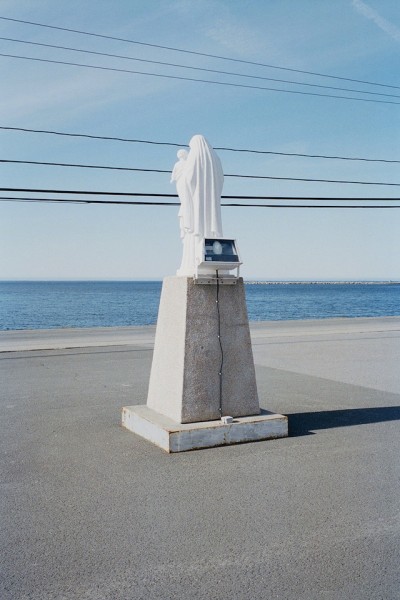
Each of the 20 photographs from Village is framed and matted with embossed text below the image, poetic-sounding descriptions in French and English. One representative work, Son propre nez (One’s own nose; 2015), shows the back of a white statue of the Madonna and child. Light clouds blur across the sky and the stone icons look out on the Gulf of Saint Lawrence. Telephone lines streak across the photograph, and a box is affixed to the back of the large pedestal, wired to the ground. One might try to create a connection between the caption and this image; this could be variably fruitful or fruitless.
After arriving in Quebec, the artists found themselves thrust into conversations about Canada’s language politics. These conversations led them to wonder about the languages spoken in the region before the French started setting traps and planting flags. Working with a research group, Källström and Fäldt identified pre-colonial names of places they photographed and the First Nation origins of contemporary place names. The photographs’ captions are French and English translations of those names from Algonquin, Mi’kmaq, and other languages. The original places names are both obscured, as they are not disclosed, and magnified, as their translations are what viewers have to ground the photographs. The exhibition provides no indication of where exactly the photographs were taken, but the accompanying artists’ book includes an index that notes, for example, that Son propre nez was taken on the shores of Détroit d’Honguedo.
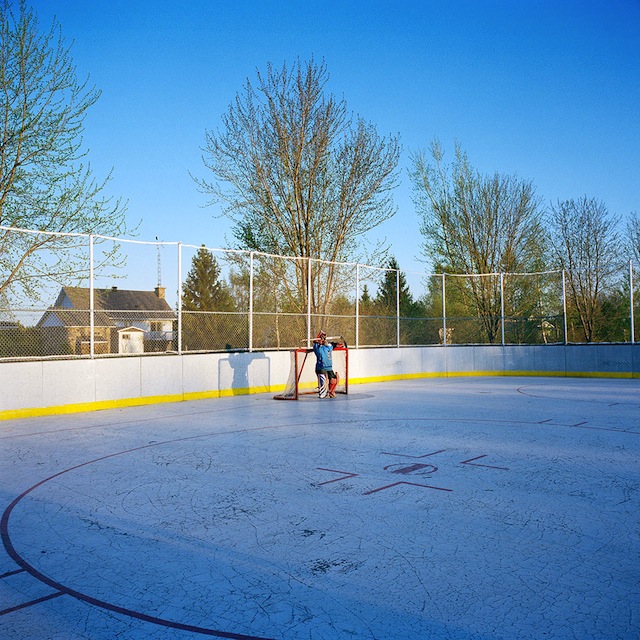
Källström and Fäldt unabashedly assumed the role of tourists, knowing they could neither be Canadians nor linguists nor anthropologists. They took as inspiration Swiss photographer Robert Frank’s 1958 The Americans, a sort of photographic Democracy in America. Noting that in this tradition of photography objective and descriptive captions are standard, Källström and Fäldt play with their titles, drawing upon more than what is seen on the surface. The titles dig beneath layers of colonialism and gesture at that which might otherwise remain unobserved.
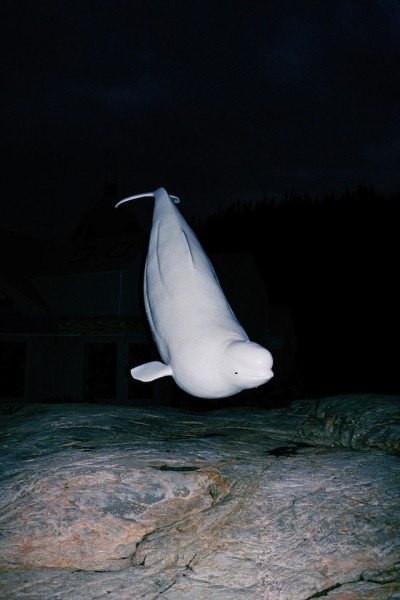
Källström and Fäldt capture tokens of Canadian culture in many pieces, such as a celebration of Quebec’s La fête nationale, a cannon ball from a historic battle, and a cheerleading squad, which to the artists’ Swedish perspective is a uniquely North American phenomenon. Lieu où l’on ramasse des oeufs (Place where they gather eggs; 2015) pictures a lone goalie stationed in front of a net, presumably in the middle of a hockey game. The outdoor rink is cracked and scratched. Sparse trees shadow the rink and a number of suburban-looking homes are seen in the distance.
